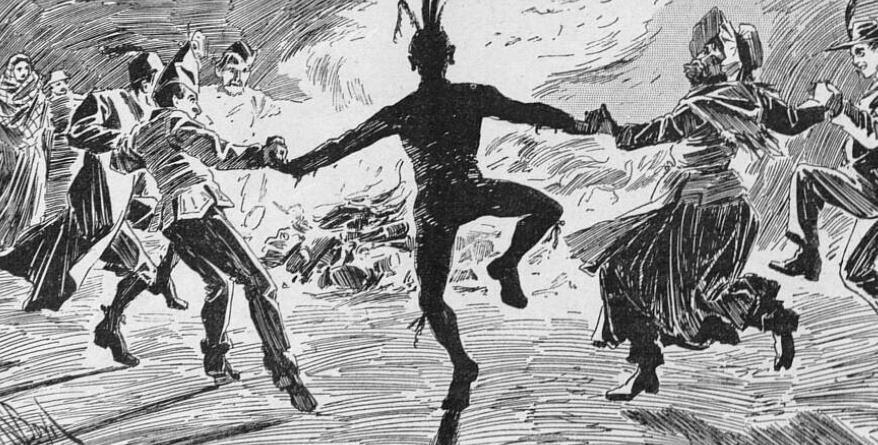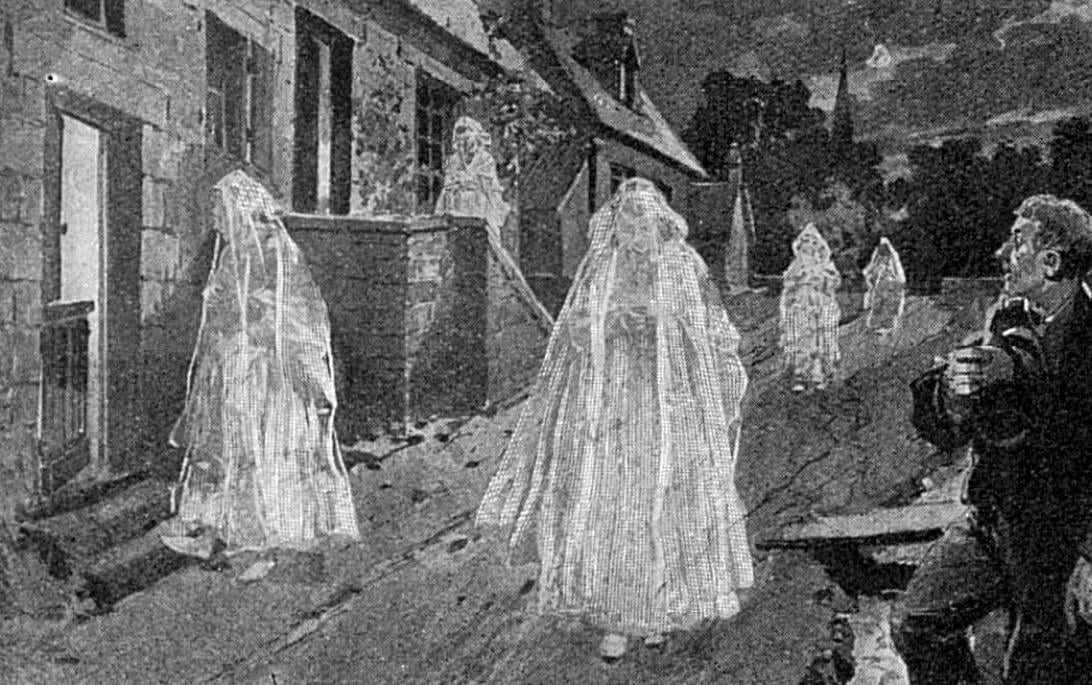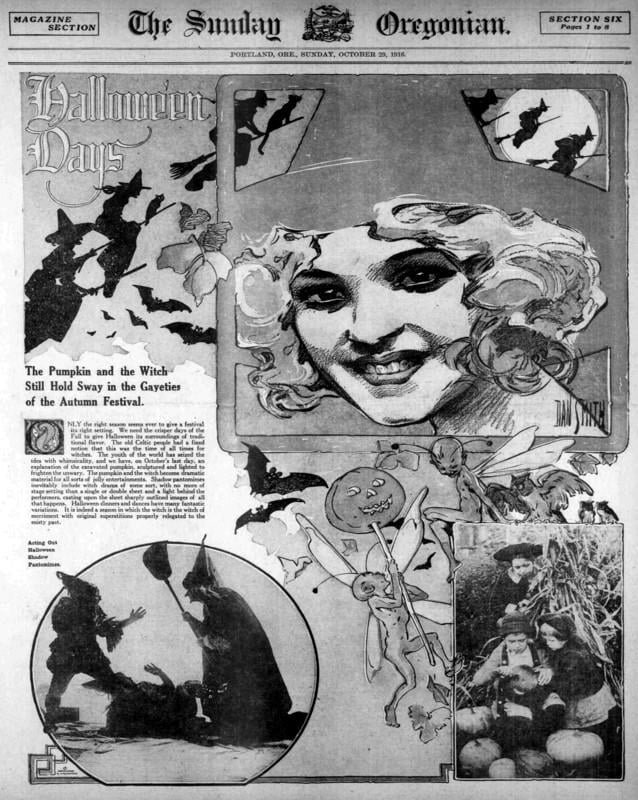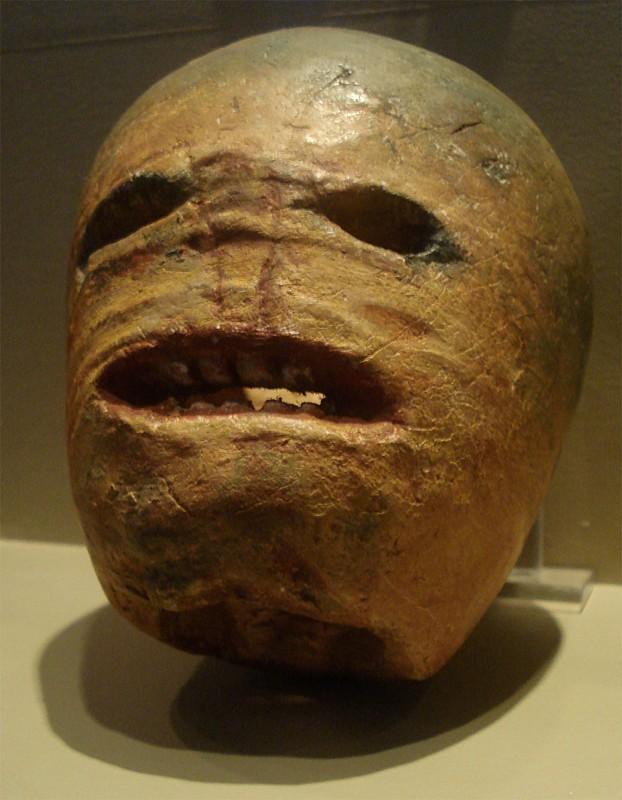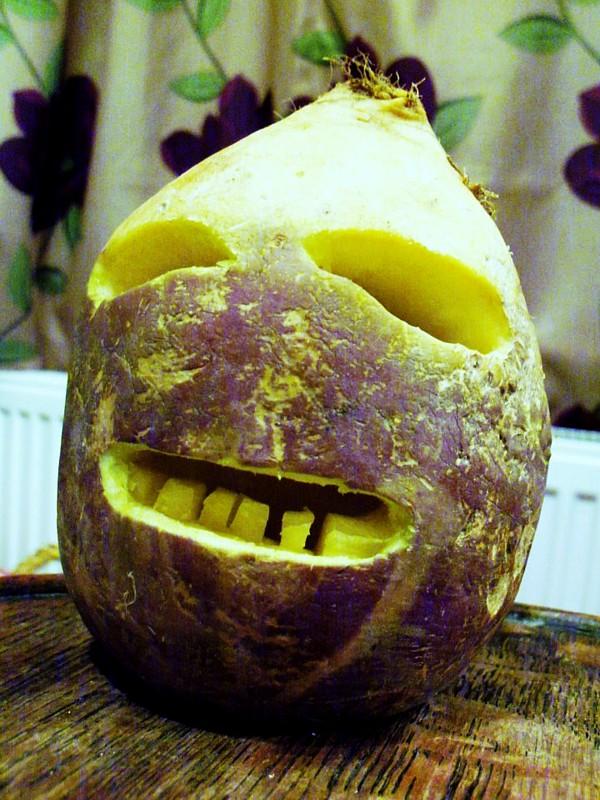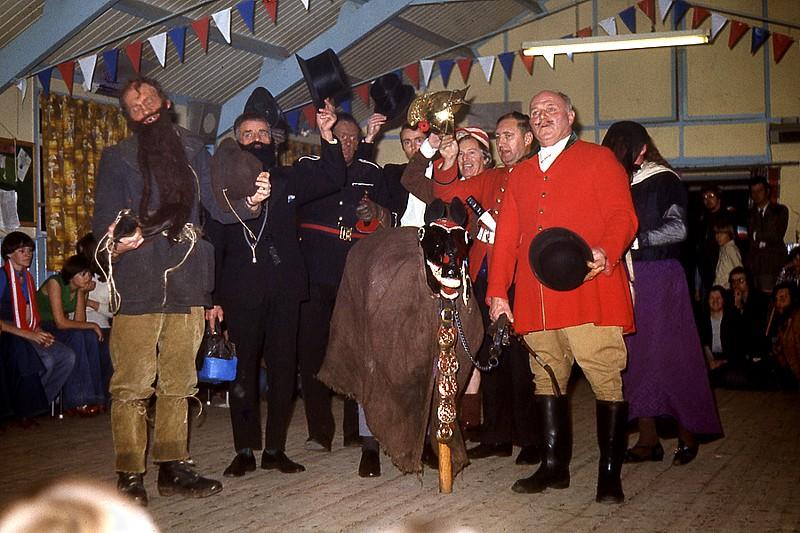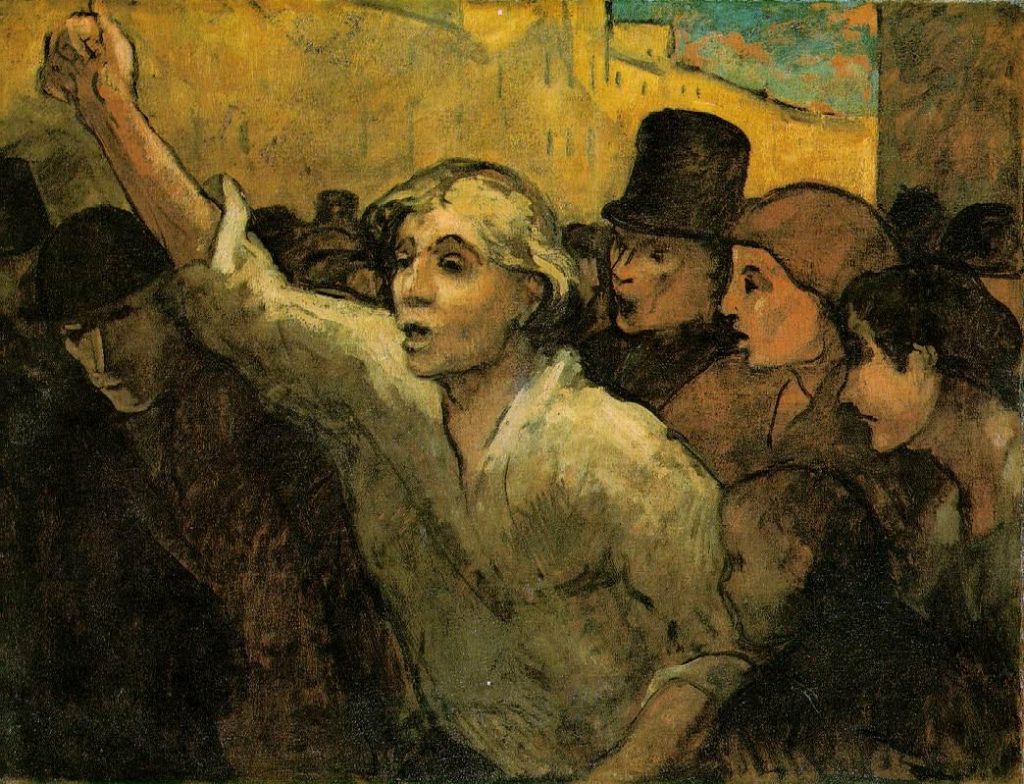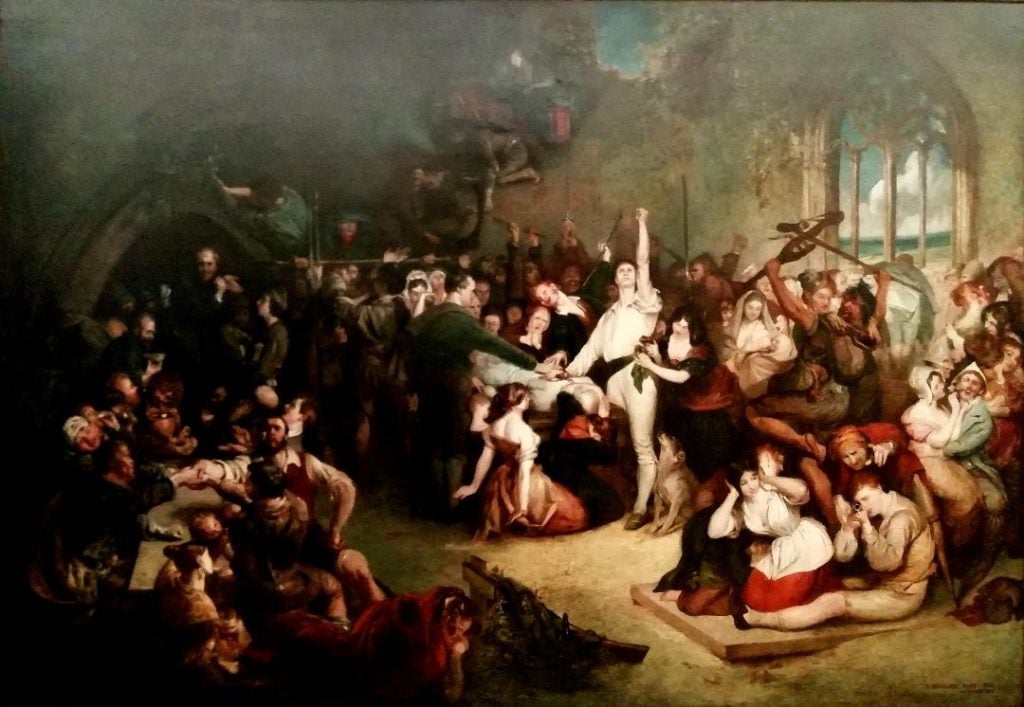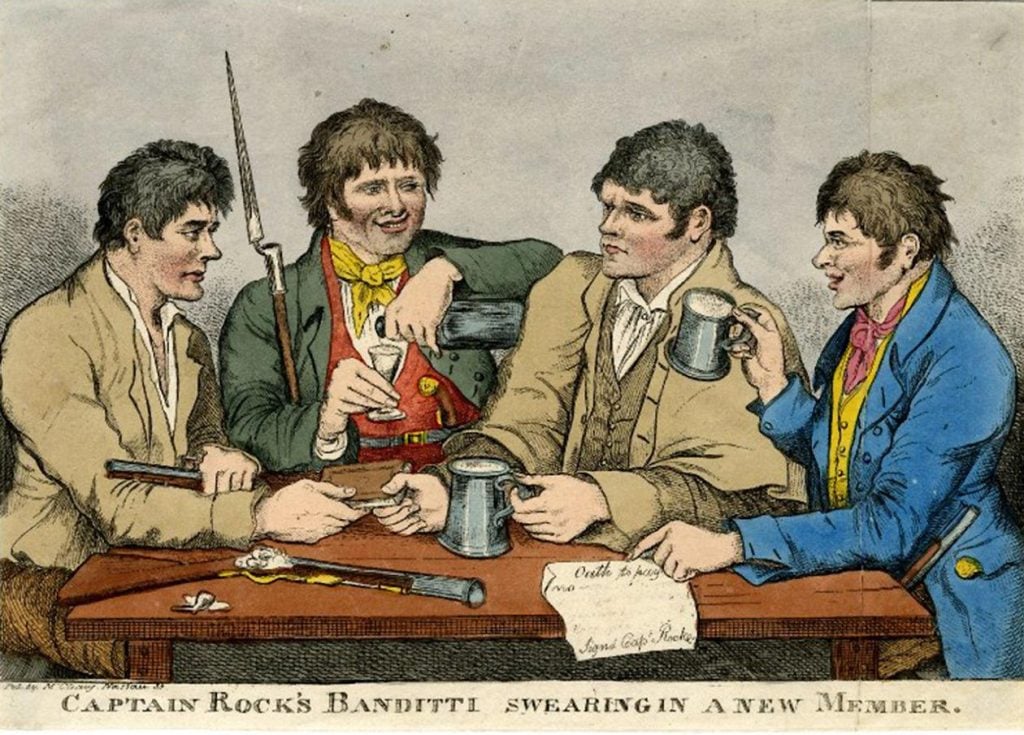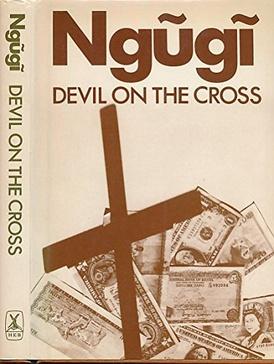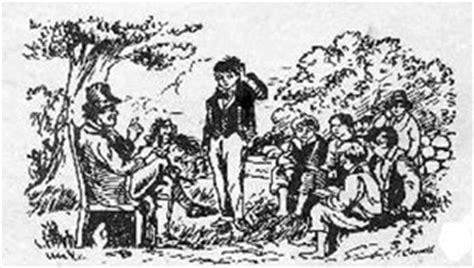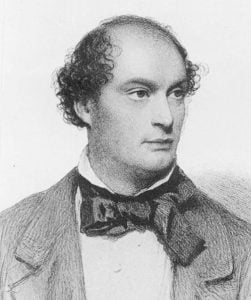Snap-Apple Night, painted by Daniel Maclise in 1833, shows people feasting and playing divination games on Halloween in Ireland. It was inspired by a Halloween party he attended in Blarney, Ireland, in 1832.
“We make up horrors to help us cope with the real ones.” – Stephen King
Halloween is creeping up on us again replete with all its ghostly traditions celebrated all over the world.
Also known as All Saints’ Eve, it is the time in the liturgical year or Christian year dedicated to remembering the dead, including saints (hallows), martyrs, and all the faithful departed. It is followed by All Saints’ Day, also known as All Hallows’ Day on the 1 November, and All Souls’ Day, a day of prayer and remembrance for the faithful departed, observed by certain Christian denominations on 2 November.
However, it is also believed that Halloween is rooted in the ancient pagan Gaelic festival of Samhain which marks the change of seasons and the approach of winter. Samhain begins at sunset on October 31 and continues until sunset on November 1, marking the end of harvest and the start of winter. This Celtic pagan holiday followed the great cycle of life as part of their year-round celebrations of nature along with Imbolc (February 1), Beltane (May 1) and Lughnasadh (August 1).
During Samhain people would:
“bring
their cattle back from the summer pastures and slaughter livestock in
preparation for the upcoming winter. They would also light ritual
bonfires for protection and cleansing as they wished to mimic the sun
and hold back the darkness. It was also a time when people believed that
spirits or fairies (the Aos Sí ) were more likely to pass into our
world. […] Dead and departed relatives played a central role in the
tradition, as the connection between the living and dead was believed to
be stronger at Samhain, and there was a chance to communicate. Souls of
the deceased were thought to return to their homes. Feasts were held
and places were set at tables as a way to welcome them home. Food and
drink was offered to the unpredictable spirits and fairies to ensure
continued health and good fortune.”
Dancing around the bonfire. The Graphic | 7 January 1893
The Celts believed in an afterlife called the Otherworld which was similar to this life but “without all the negative elements like disease, pain, and sorrow.”
Therefore, the Celts had little to fear from death when their soul left their body, or as the Celts believed, their head.
As Christianity spread in pagan communities, the church leaders attempted to incorporate Samhain into the Christian calendar. The Roman Empire had conquered the majority of Celtic lands by A.D. 43 and combined two Roman festivals, Feralia and Pomona with the traditional Celtic celebration of Samhain. Feralia was similar to Samhain as the Romans commemorated the passing of their dead, while Pomona, whose symbol was the apple, was the Roman goddess of fruit and trees, and may be the origin of the apple games of Halloween.
Some centuries later the church moved again to supplant the pagan traditions with Christian ones:
“On May 13, A.D. 609, Pope Boniface IV dedicated the Pantheon in Rome in honor of all Christian martyrs, and the Catholic feast of All Martyrs Day was established in the Western church. Pope Gregory III later expanded the festival to include all saints as well as all martyrs, and moved the observance from May 13 to November 1. By the 9th century, the influence of Christianity had spread into Celtic lands, where it gradually blended with and supplanted older Celtic rites. In A.D. 1000, the church made November 2 All Souls’ Day, a day to honor the dead.”
While on the surface the changes from the Celtic Otherworld to the Christian concepts of Heaven, Purgatory and Hell may not seem very radical yet when one looks further into the different beliefs about the afterlife a very different story emerges.
The Otherworld
The Celtic Otherworld is “more usually described as a paradisal fairyland than a scary place” and sometimes described as an island to the west in the Ocean and “even shown on some maps of Ireland during the medieval era.” It has been called, or places in the Otherworld have been called, “Tír nAill (“the other land”), Tír Tairngire (“land of promise/promised land”), Tír na nÓg (“land of the young/land of youth”), Tír fo Thuinn (“land under the wave”), Tír na mBeo (“land of the living”), Mag Mell (“plain of delight”), Mag Findargat (“the white-silver plain”), Mag Argatnél (“the silver-cloud plain”), Mag Ildathach (“the multicoloured plain”), Mag Cíuin (“the gentle plain”), and Emain Ablach (possibly “isle of apples”).”
As can be seen from the names given to the places of the Otherworld there are two important, salient points. One is the positive, almost welcoming aspect of the descriptions implied, and secondly their close relationship with nature and places in the real world. The Otherworld is described “either as a parallel world that exists alongside our own, or as a heavenly land beyond the sea or under the earth,” and could be entered through “ancient burial mounds or caves, or by going under water or across the western sea.”
We may then ask who could enter the Otherworld in the afterlife?
“Although there are no surviving texts from the continent which comment on this, on the basis of comparisons with comparable societies and burial practices we can guess that both the gods and the ancestral dead were believed to inhabit the Otherworld. The earliest literary texts in Irish reflect exactly this idea.”
These deductions about the afterlife then reflect the nature-based ideology of pagan religion which is focused on the cycles of nature, and also the fact that we ourselves are part of that nature, thus both the ancestral dead and the gods inhabited the Otherworld. It seems that the dead entered the Otherworld fairly quickly and could even return to visit the living when the darkness started to take over from the light at Samhain. Even the living could visit the Otherworld but these visits would have their own drawbacks, for example, Oisín discovers that what had only seemed a short stay in Tír na nÓg had been hundreds of years in the real world.
Ghosts walk the night in Brittany by F. De Haenen | The Graphic | 5 November 1910
Christian Heaven, Hell, and Purgatory
The differences between nature-based paganism and the Master and Martyr ethics of Christianity mean that entry to heaven is not guaranteed and may even be delayed for a long time in purgatory. For example:
“Christianity considers the Second Coming of Jesus Christ to entail the final judgment by God of all people who have ever lived, resulting in the approval of some and the penalizing of most. […] Belief in the Last Judgment (often linked with the general judgment) is held firmly in Catholicism. Immediately upon death each person undergoes the particular judgment, and depending upon one’s behavior on earth, goes to heaven, purgatory, or hell. Those in purgatory will always reach heaven, but those in hell will be there eternally.”
Hell is often depicted with fire and torture of the guilty. Thus, Christianity brings a strong element of fear into perceptions of the afterlife. The people whose behaviour needs to be controlled are frightened into being good and given long promises about eventual eternal bliss at the end of time.
The patriarchal element of Christianity and its desire to control and direct the remnants of pagan religion gave rise to other important aspects of Halloween. The dark symbolism of witches on broomsticks with black cats are an essential element of the Halloween imagery. By late medieval/early modern Europe, fears about witchcraft rose to fever pitch and sometimes led to large-scale witch-hunts. The Church saw these women (whose knowledge of nature was transformed into healing homoeopathic treatments) as a threat to their authority and demonised them before their own communities.
The witches “occasionally functioned as midwives, assisting the delivery and birth of babies, aiding the mother with different plant-based medicines to help with the pain of childbirth. […] The word Witch comes from the word for ‘wise one’ that was ‘Wicca’, and who were once considered wise soon became something to be feared and avoided.”
“Halloween Days”, article from American newspaper, The Sunday Oregonian, 1916
Like many traditional festivals Halloween has different historical sources, pagan and Christian, that have come together to form the holiday as we know it today.
Jack-o’-lantern
Jack-o’-lantern represents the soul caught between heaven and hell who can know no rest and must wander on the earth forever. It is believed to originate in an old Irish folk tale from the mid-18th century which tells of Stingy Jack, “a lazy yet shrewd blacksmith who uses a cross to trap Satan.”
A plaster cast of a traditional Irish Jack-o’-Lantern in the Museum of Country Life, Ireland. Rutabaga or turnip were often used.
Jack tricks Satan who lets him go only after he agrees to never take his soul. When the blacksmith dies he is considered too sinful to enter heaven. He could not enter hell either and asks Satan how he will be able to see his way in the dark. Satan’s response was to toss him “a burning coal, to light his way. Jack carved out one of his turnips (which were his favorite food), put the coal inside it, and began endlessly wandering the Earth for a resting place.”
The Irish emigrants to the United States are believed to have switched the turnip for a pumpkin as it was more accessible and easier to carve. Ironically, in Ireland now, pumpkins are grown and sold to make modern Jack-o’-lanterns.
Modern carving of a Cornish Jack-o’-Lantern made from a turnip.
Door to Door Traditions
Another American tradition, trick-or-treating, has also taken root in Ireland in recent decades. As a child growing up in the United States, I also went trick-or-treating in Boston. However, after our move to Dublin, our trick-or-treating questions at Halloween were met with bewilderment as Irish people were used to a simple request for ‘anything for the Halloween party’.
The tradition of going door to door on Halloween may come from the belief that supernatural beings, or the souls of the dead, roamed the earth at this time and needed to be appeased. In Europe, from the 12th century, special ‘soul cakes’ would be baked and shared. People would pray for the poor souls of the dead (in purgatory) in return for soul cakes. In Ireland and Scotland “mumming and guising (going door-to-door in disguise and performing in exchange for food) was taken up as another variation on these ancient customs. Pranks were thought to be a way of confounding evil spirits. Pranks at Samhain date as far back as 1736 in Scotland and Ireland, and this led to Samhain being dubbed ‘Mischief Night.’”
Antrobus Soul Cakers at the end of a performance in a village hall in or near Antrobus, Cheshire, England in the mid 1970s. The Soul Cakers are a traditional group of mummers, who perform around All Soul’s Day (October 31st, Hallowe’en) each year. The characters are (left to right) Beelzebub, Doctor, Black Prince, Letter-In, Dairy Doubt, King George, Driver, Old Lady, and Dick, the Wild Horse in the foreground.
Antrobus Soul Cakers at the end of a performance in a village hall in or near Antrobus, Cheshire, England in the mid 1970s. The Soul Cakers are a traditional group of mummers, who perform around All Soul’s Day (October 31st, Hallowe’en) each year. The characters are (left to right) Beelzebub, Doctor, Black Prince, Letter-In, Dairy Doubt, King George, Driver, Old Lady, and Dick, the Wild Horse in the foreground.
It has also been suggested that trick-or-treating “evolved from a tradition whereby people impersonated the spirits, or the souls of the dead, and received offerings on their behalf.” It was thought that they “personify the old spirits of the winter, who demanded reward in exchange for good fortune”. Impersonating these spirits or souls was believed to protect oneself from them.
Thus, while Halloween may have become highly commercialised in recent years it is still an important custom that brings people and families together in their communities. It still marks an important part of the annual cycles of nature as the bountifulness of harvestime is contrasted with the bareness of winter. It prepares us psychologically for the dark days ahead. In the past Halloween allowed people to celebrate the completion of the work of life (the production of food) to having the time to contemplate the absence of their forebears: the people who gave them life, nurtured them, and taught them the skills of survival. It is a time to make the young generation aware of their parents’ temporary existence too, in a fun way.
Halloween is a time for confronting our basic fears about death and darkness. It is a time to remember the ancestral spirits of past generations who have ‘passed’ (a word that has become more popular than ‘died’ in recent years) through the thin veil between life and death. And, most importantly, a time to rethink our relationship with nature.
Caoimhghin Ó Croidheáin is an Irish artist, lecturer and writer. His artwork consists of paintings based on contemporary geopolitical themes as well as Irish history and cityscapes of Dublin. His blog of critical writing based on cinema, art and politics along with research on a database of Realist and Social Realist art from around the world can be viewed country by country here. Caoimhghin has just published his new book – Against Romanticism: From Enlightenment to Enfrightenment and the Culture of Slavery, which looks at philosophy, politics and the history of 10 different art forms arguing that Romanticism is dominating modern culture to the detriment of Enlightenment ideals. It is available on Amazon (amazon.co.uk) and the info page is here.
He is a Research Associate of the Centre for Research on Globalization (CRG).

